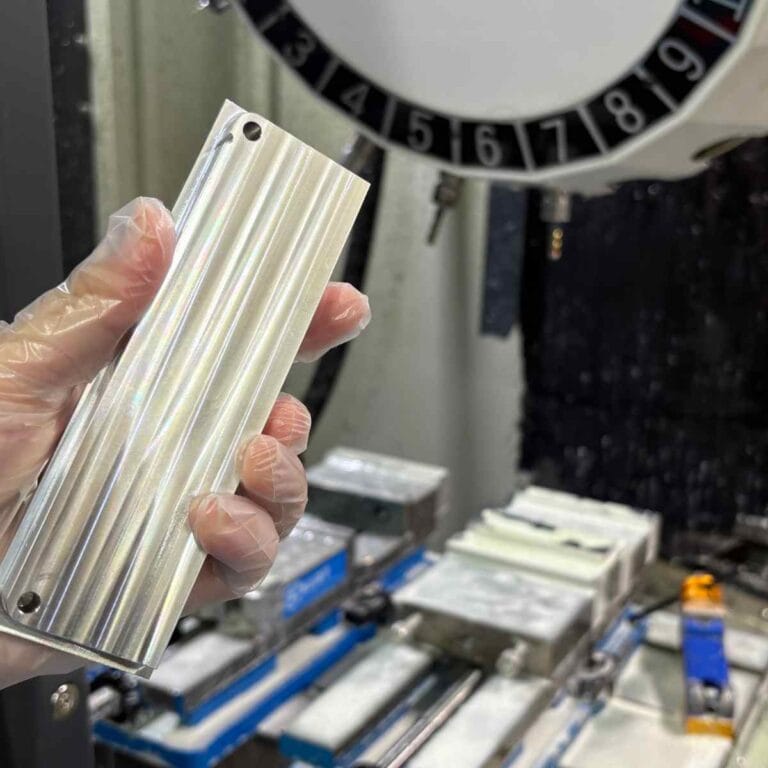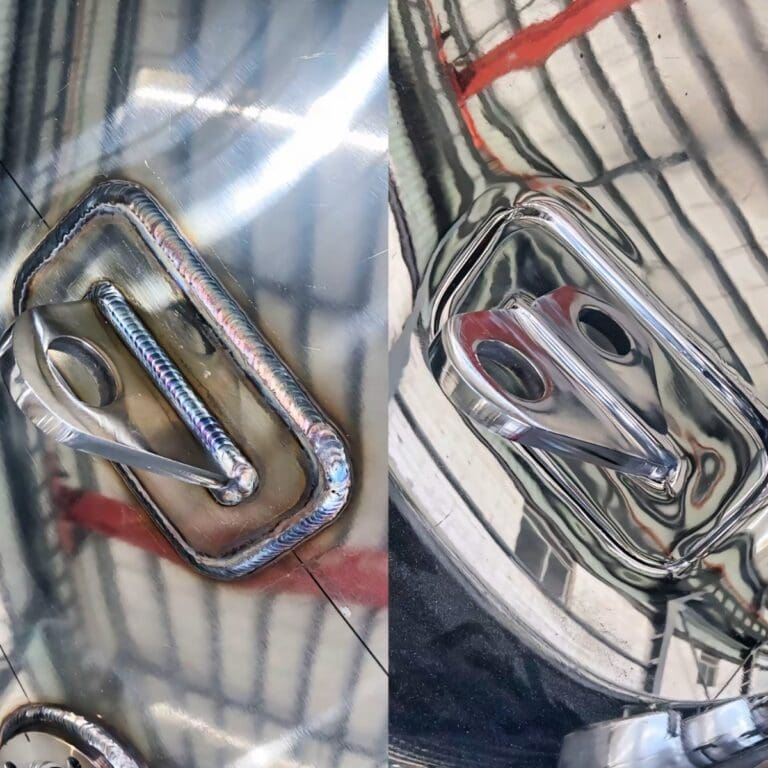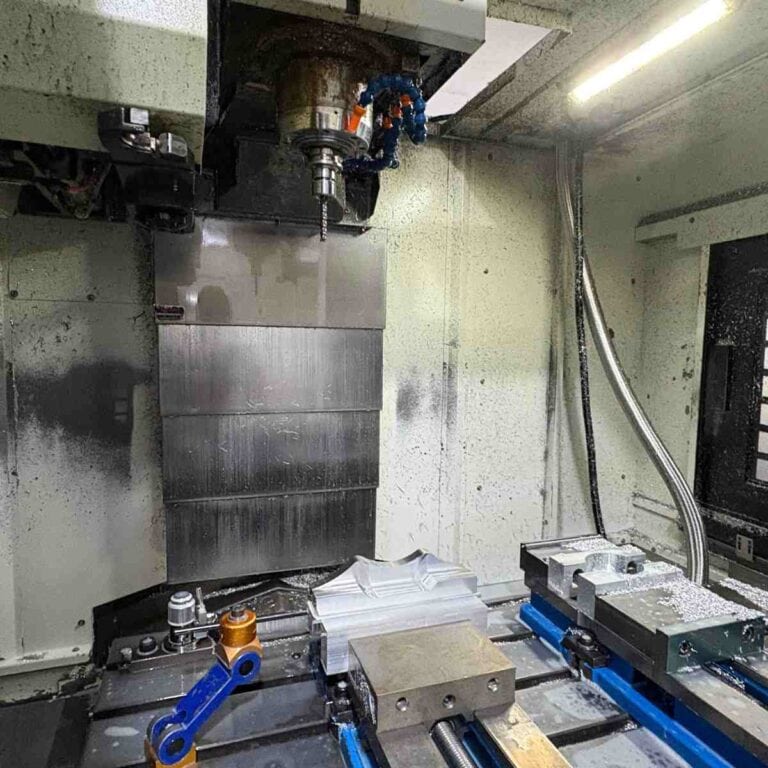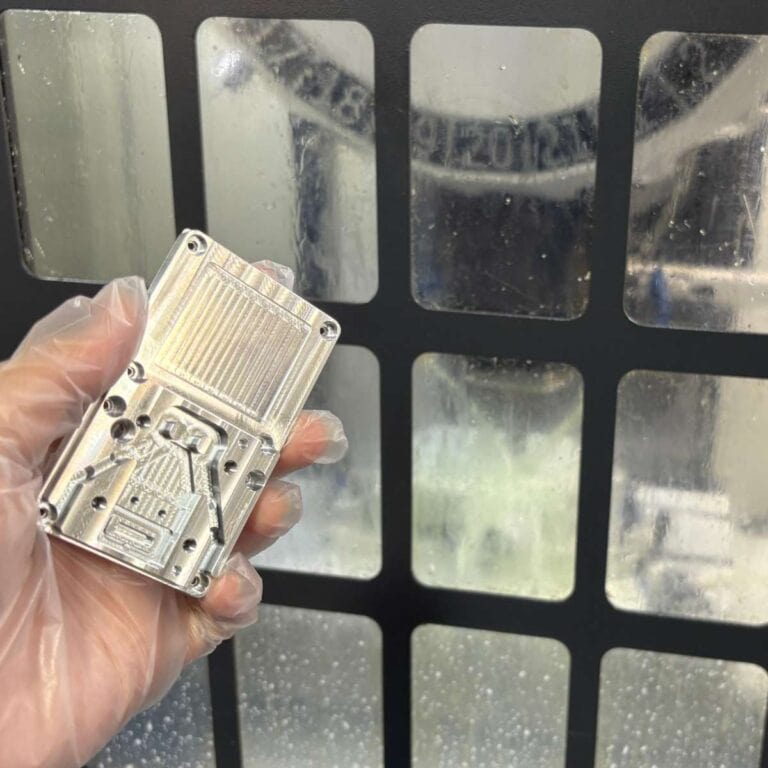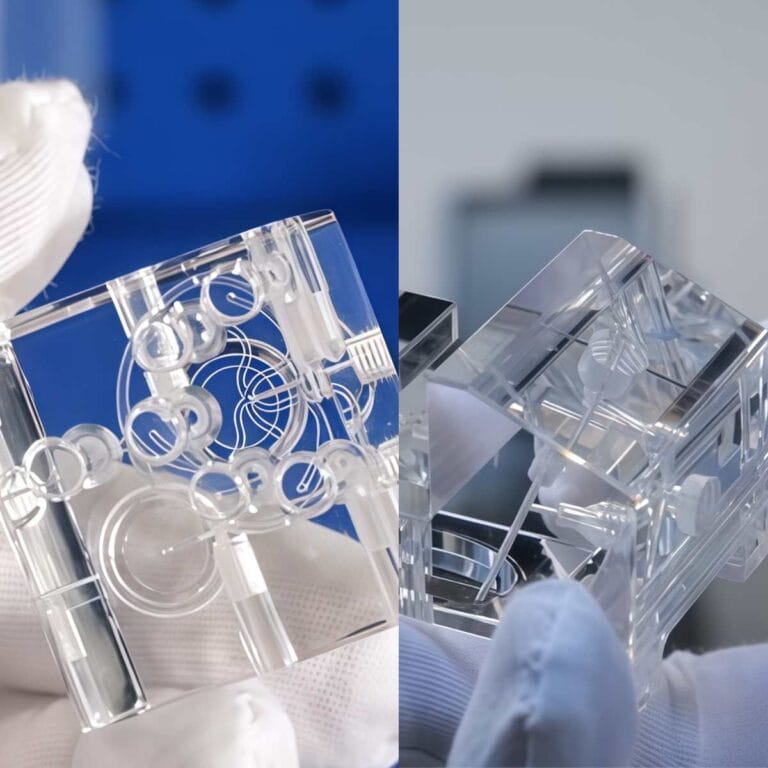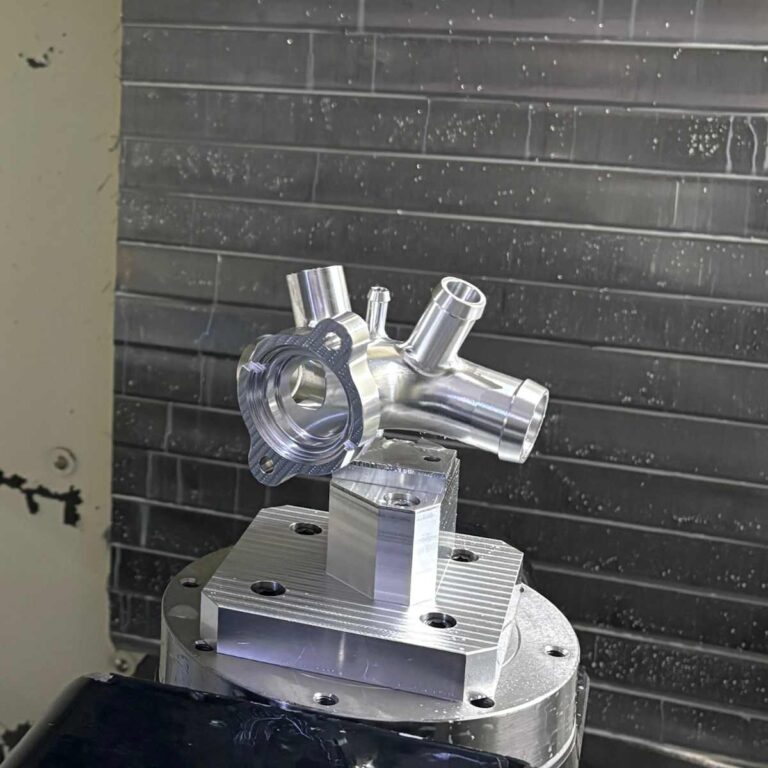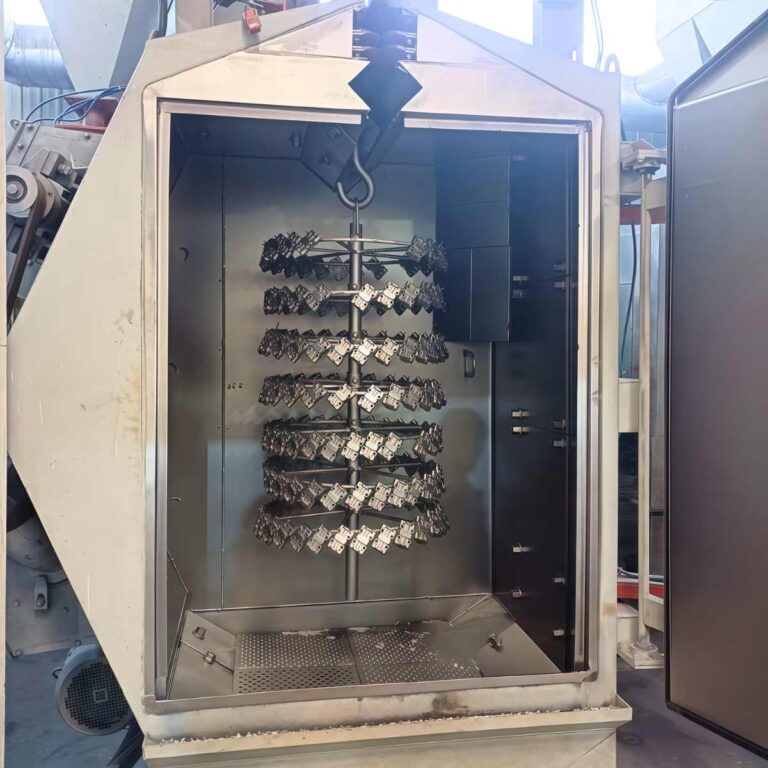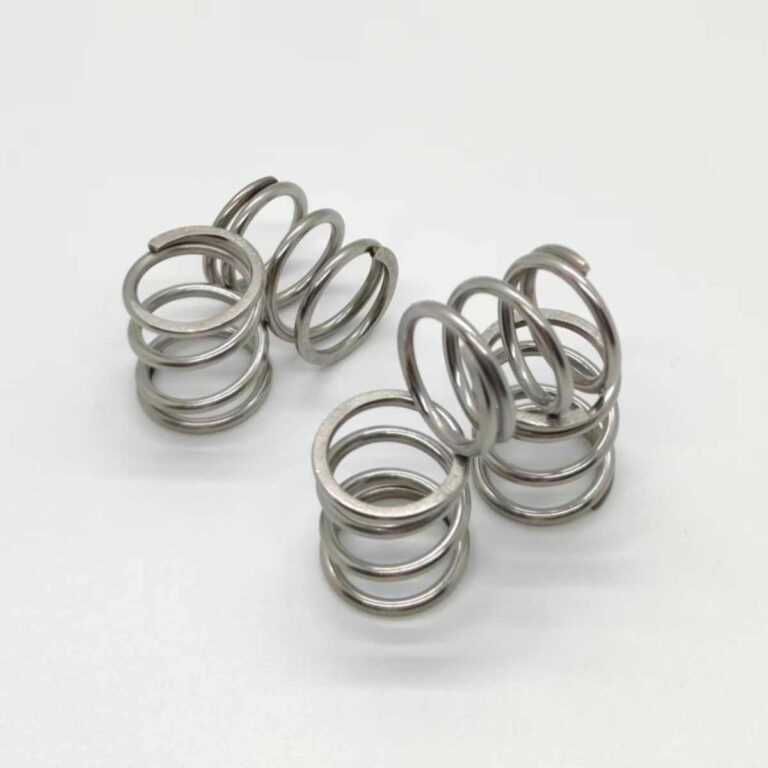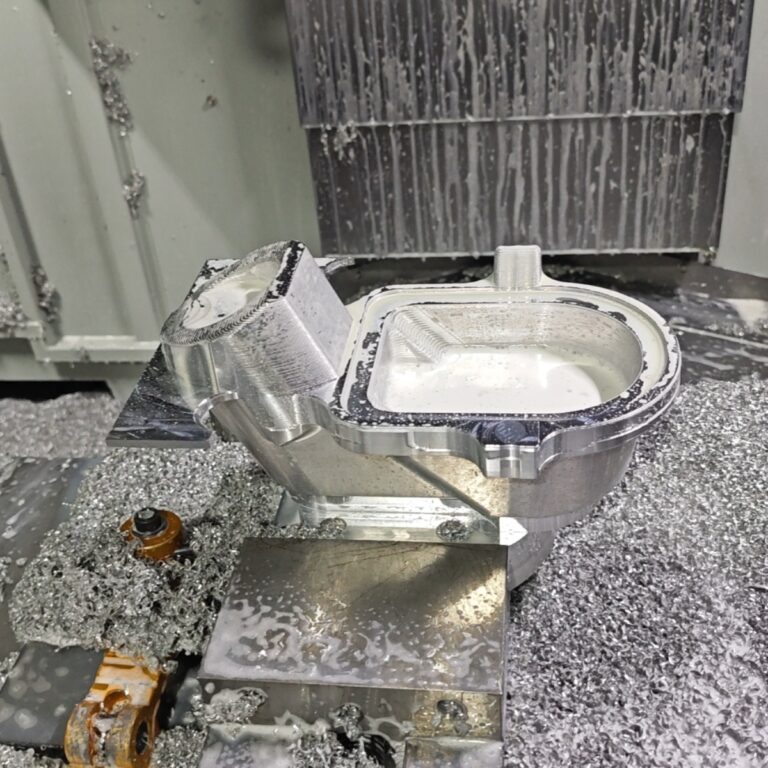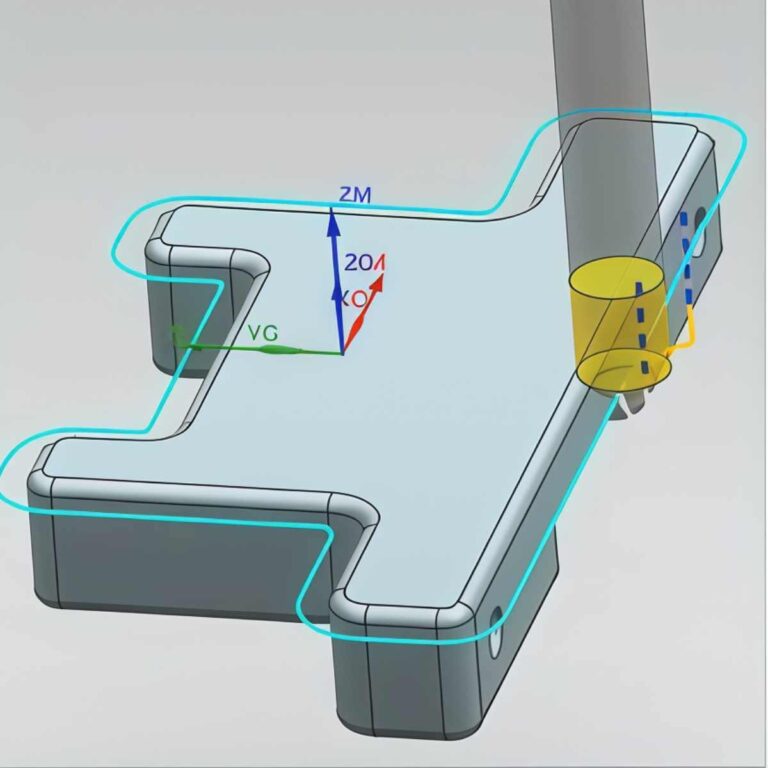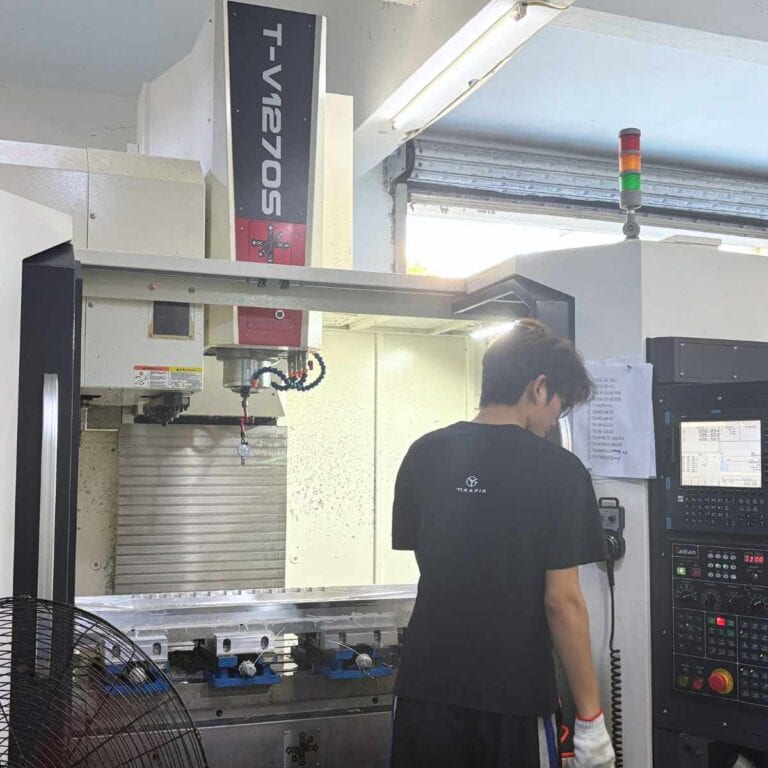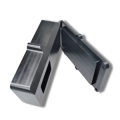Electrospark machining (EDM) uses high-temperature discharge to melt metal and achieve high-precision complex parts processing. Among the various types of EDM machining, there are three main methods: wire cutting, immersion, and small hole discharge. Each type is suitable for different applications, such as the manufacture of hard materials, micro features, and complex cavities. Below, I will explain their principles, characteristics, and applications in detail with actual cases.
What Is EDM
Electrospark machining is a non-contact precision machining process that generates a pulsed high-temperature arc between the electrode and the workpiece to locally melt the metal. In many aviation, medical and high-precision mold projects I have participated in, this process is widely regarded as an important means to break through the limitations of traditional cutting.
Its working principle is to apply 80 to 320 volts of pulsed direct current between the two electrodes, and the discharge gap will form a plasma channel as high as 8000 to 12000 degrees Celsius within 1 to 3 microseconds, instantly vaporizing or melting the metal surface. The molten metal is then carried away by the insulating liquid within 0.02 seconds. Residue particles ensure that the processing area is clean and stable.
Compared with traditional milling, EDM produces almost no mechanical stress and the cutting force is close to zero, which is very suitable for processing 0.3 mm thin-walled structures or deep cavity complex parts, and the part deformation rate can be less than 0.02%. This feature gives it a unique advantage in high-precision and high-hardness workpieces.
In terms of dimensional accuracy, EDM can usually maintain a tolerance of ±0.005 to 0.01 mm, and the optimal surface roughness can reach Ra0.2 microns, while ordinary CNC milling can only achieve Ra1.6 microns on high-hardness alloys. According to industry statistics, a 6-kilowatt wire-cut EDM machine can run for an average of 4,000 hours per year, with a processing speed of about 80 to 180 square millimeters per minute, and the average wear rate of copper electrodes is between 0.2% and 0.5%.
EDM can stably process materials with hardness up to HRC70, including high-cobalt high-speed steel, cemented carbide, titanium alloy and nickel-based high-temperature alloy. It is especially suitable for injection molds, precision dies, engine turbines and medical devices, etc., which require extremely high geometric accuracy. Although the processing cycle is longer than tool cutting, it can achieve complex cavities and microstructures with a depth of more than 50 mm, which is almost impossible with traditional processes.
In my opinion, EDM is not only a key technology for high-end manufacturing, but also an important direction for the development of micro-machining and automated intelligent compensation in the future. Next, I will systematically show you its definition, discharge principle and historical evolution.
Three Types Of EDM Machining Processes
There are three main types of EDM, namely wire EDM, immersion EDM and pinhole EDM. These three processes have played different core roles in the mold, aviation, medical equipment and other projects I have actually participated in. They all use high-frequency pulse current to generate instantaneous high-temperature arcs on the surface of conductive workpieces to remove materials, but each method has different process characteristics, processing efficiency and application scope.

Wire EDM
Wire EDM, in fact, is what many engineers often call “wire cutting”. It is an electric spark process that uses a continuously moving thin wire electrode to process metal. In the mold projects and aviation parts manufacturing I participated in, it is almost the preferred process for processing high-precision contours. Its principle is not complicated: a brass or zinc alloy electrode wire with a diameter of 0.1 to 0.25 mm moves slowly along the woven path, generating thousands of tiny discharges every second, eroding the material bit by bit. Although there is no blade in this process, the cutting ability is not weak.
A medium-power (6 kW) wire EDM machine can cut 80 to 180 square millimeters of material per minute on average, with a tolerance accuracy that can be stably maintained within ±0.005 mm and a surface roughness that can be as low as Ra0.4 microns. If you have seen the precision parts in aircraft engines or the smooth and straight contours on stamping dies, most of them are made by it. I once helped a customer make a mold cavity with a depth of nearly 50 mm. Traditional milling could not achieve this geometric accuracy at all, and in the end, wire EDM solved the problem.
Of course, it is not without limitations. Because the electrode wire needs to leave a discharge gap, all internal right angles will have a small rounded corner, usually between 0.13 and 0.3 mm, which requires compensation in advance during the design stage. The consumption of the wire itself cannot be ignored. For a machine throughout the year, the cost of the electrode wire may account for about 15% of the total processing cost.
In general, wire EDM is a set of accurate and stable “slow work and fine work” solutions. Whether it is the mold industry or the production of aviation precision parts, it is inseparable from its support. If you want to make parts with complex contours, hard materials, and extremely high dimensional accuracy, wire EDM is definitely worth considering.
Forming EDM
Immersion EDM, also known as forming EDM, is a process that many mold factories and precision parts manufacturers cannot do without. If wire EDM is good at “cutting”, then immersion EDM is more like “carving”. It etches the entire shape into the metal step by step through an electrode made into a negative cavity. This process is very common in the injection mold and die-casting mold projects I have been involved in.
Its principle is to first use copper or graphite electrodes to make the required geometric contour, the shape is like the “reflection” of the workpiece. Then the electrode will be repeatedly pressed on the workpiece, each pulse discharge time is only a few microseconds, the instantaneous temperature can reach more than 8000 ℃, the surface of the material is melted or vaporized. The whole process needs to be carried out in insulating oil to prevent short circuit and take away metal residues. Although it seems slow, a 6-kilowatt immersion EDM machine can remove an average of 15 to 50 cubic millimeters of metal per hour.
The biggest advantage of this process is that it can produce complex deep cavity structures with a depth of more than 50 mm. The tolerance is generally maintained at around ±0.01 mm, and the surface roughness can reach Ra0.4 to 1.2 microns. I once participated in the production of an automotive die-casting mold. The deep cavity in the molding area was 47 mm deep. If traditional milling was used, it would take several passes and manual trimming in the later stage. However, immersion EDM can complete most of the geometry in one discharge forming, which greatly saves the process.
Of course, it also has its shortcomings. The electrode itself needs to be processed first, and the more complex the shape, the higher the electrode manufacturing cycle and cost. Sometimes the electrode production cost of a mold can account for more than 30% of the overall labor cost, so the cost-effectiveness should be specially considered in the small batch or trial production stage.
In general, immersion EDM is a powerful tool for complex cavities. Although the process is slow, the molding effect is very fine and reliable. If your parts have deep cavities, steps, bevels or small rounded corners, this process must be given priority.
Small hole EDM
Small hole EDM, also known as small hole EDM drilling, is one of the processes I use most often to solve the “deep hole problem”. Although there is a “small” in its name, its role is not small at all, especially in the fields of aviation, medical and high-end equipment, it is often the only way to drill small and deep holes.
Its principle is very direct: a thin hollow electrode tube rotates at high speed while the tip of the electrode continuously pulses and discharges, corroding the metal bit by bit. Insulating fluid is sprayed into the discharge gap, cooling and taking away the metal chips. When many people saw it working for the first time, they were surprised that it could stably produce microholes with a diameter of 0.1 to 3 mm and a depth-to-diameter ratio of more than 20 to 1. For example, in an aviation turbine blade project I participated in, each blade had dozens of cooling holes with a diameter of 0.5 mm and a depth of more than 12 mm. Ordinary drills could not do this at all, but small hole EDM could do it in one go. The hole wall accuracy can be stabilized within ±0.02 mm, and the surface roughness can be controlled at around Ra0.8 microns.
Its advantages are very obvious: it is almost not limited by the hardness of the material, and can process high-hardness stainless steel, nickel-based alloys, and cemented carbide; it has a small hole diameter, a large depth, and a very high shape consistency. If you want to make a 20mm deep through hole in a 0.3mm diameter range, it is basically the only one that can do it.
Of course, like all EDM processes, it also has limitations: the processing efficiency is relatively low, and the volume of metal removed per minute is far less than that of traditional drilling; the electrode is consumed quickly, especially for high-precision small holes, and the electrode life is often only a few dozen holes; the processing cost is also relatively high, and it is suitable for high-value parts or key areas.
In my opinion, small hole EDM is like a “magic trick” in precision manufacturing. Although it is not fast, it can solve those almost unsolvable deep hole process problems. If your product involves aviation cooling holes, mold exhaust holes, and nozzle micro-holes, you must include it in the process selection list.
Special And Novel EDM Methods
Special and new EDM methods are actually new technology combinations that are constantly emerging in the field of EDM, which are used to solve problems that traditional processes cannot or are not economical to solve. In the high-precision manufacturing that I have been exposed to, powder mixing EDM, dry EDM and micro EDM have become standard processes for the production of some special parts. They are all based on the same discharge principle, but by improving the working medium, electrode materials or electrical parameters, the processing performance is further pushed to the limit, specifically to meet ultra-high surface quality, extremely small features or environmental protection requirements.
Powder mixing EDM is to add a certain proportion of conductive powder, such as silicon powder or graphite powder, to the insulating liquid. The discharge gap will form a more uniform plasma channel. This method can reduce the surface roughness to below Ra0.2 microns and maintain the tolerance at about ±0.003 mm. I once participated in a medical mold project that required the processing of mirror cavities on stainless steel. Traditional oil-based EDM can only achieve Ra0.4 microns at most. After powder mixing, the surface can almost be used directly for injection molding without polishing.
Dry EDM uses high-pressure gas (mostly compressed air or nitrogen) instead of liquid insulating fluid, which is clean and environmentally friendly. It is very suitable for processing micro channels or electronic parts, reducing the risk of working fluid contamination. According to data, the heat-affected zone of dry EDM is 30% smaller than that of traditional processes, and the surface hardening layer is thinner, which is conducive to subsequent surface treatment.
Micro EDM, also known as Micro EDM, is a process that uses extremely small diameter electrodes (even 0.02 mm) to machine micro holes or micro structures. I participated in a micro connector project that required drilling a 0.05 mm diameter and 2 mm depth positioning hole on titanium alloy, which was impossible with traditional small hole EDM. Finally, using Micro EDM, the hole diameter tolerance was controlled at ±0.005 mm, the depth-to-diameter ratio reached 40:1, and the yield rate exceeded 95%.
Although these special EDM methods are generally 30% to 50% slower than traditional methods, they are the only choice for many companies in scenarios with extremely high precision and surface quality requirements. If you are facing complex micro-geometry or extremely high surface requirements, these processes are worth your priority consideration. Next, I will continue to share their specific applications and precautions.
What Are The Core Components Of EDM Equipment
In the electrospark machining (EDM) process, the core components of the equipment mainly include the power supply system, servo control system, working fluid circulation system and electrode assembly. Together, they determine the stability of the discharge energy, the control accuracy of the machining gap, the surface quality of the workpiece and the machining efficiency. In the mold and aviation parts projects that I have participated in for many years, the importance of these systems cannot be underestimated.

Power System
function: Provide high-frequency pulse current, which is the “heart” of EDM.
Parameters: Current range is usually 3
300 volts, pulse width adjustable from microseconds to milliseconds.
Features: High-end machine tools have multi-stage current switching, rough machining uses large current to improve removal rate, and fine machining uses small current to obtain Ra0.2μm surface roughness.
Risk: When the pulse response delay exceeds 50 milliseconds, it is easy to cause short circuit or surface burns.
Case: A batch of high-hardness mold cavities used a low-response power supply, resulting in a tolerance exceeding the standard rate of 15%.
Servo Control System
function: Real-time maintenance of discharge gap stability at 5~50 microns.
Features: The higher the response sensitivity, the more uniform the discharge and the better the dimensional stability.
Risks: When the gap fluctuation exceeds ±10 microns, carbonized layers and pits are likely to appear on the surface.
Case: In a medical mold project, the servo module aged and the qualified rate of finished products dropped to 70%.
Of The Working Fluid Circulation System
: insulation, short circuit prevention, cooling, and slag removal.
Configuration: Deionized water for wire cutting, mineral oil or special insulating fluid for immersion.
Parameters: The conductivity of deionized water should be controlled at 540%, increasing the subsequent polishing hours.
Case: In the production of an aviation part, the working fluid was not replaced in time, resulting in dense pitting and a doubling of the rework rate.
Commonly Used Electrode Materials
Wire EDM Electrode
material: brass wire, zinc-clad copper wire
Diameter: 0.12 m
Advantages: high discharge stability, precise cutting contour
Immersed EDM Electrode
materials: high-purity copper, graphite
Features: Graphite electrodes have excellent wear resistance and are suitable for deep cavity processing; high-purity copper electrodes have uniform discharge and are suitable for high surface quality requirements
Risks: Graphite electrodes are prone to particle transfer and require additional surface polishing
Small Hole Discharge EDM Electrode
material: copper tube, tungsten copper alloy tube
diameter: minimum up to 0.1 mm
Features: suitable for processing micro holes with high aspect ratio
In my opinion, 80% of the performance of EDM equipment depends on the matching and management of these core systems. If the power pulse, servo response, working fluid quality and electrode selection can be reasonably configured, even in the face of high hardness alloys or fine structures, a tolerance of ±0.01 mm and a surface quality of Ra0.2 microns can be stably obtained.
Which Materials Are Suitable For EDM
EDM can cut almost all conductive metals, regardless of hardness, so it is very commonly used in mold, aviation, medical and other industries. If you ask “What materials are most suitable for EDM? What level of surface quality and tolerance can be achieved?”, my answer is: as long as the material can conduct electricity, EDM can process it, the surface roughness can be as low as Ra0.2μm, and the tolerance is controlled at ±0.01~0.02mm.
The following is a comparison of commonly used material classification and characteristics:
| Material Type | Common alloys | Features and applicability |
| Cemented Carbide | Tungsten carbide, carbide steel | Ultra-high hardness, suitable for complex mold cavities |
| High temperature alloy | Inconel, Nickel-based alloys | High temperature resistant, commonly used in aircraft engine parts |
| Titanium Alloy | TC4 (Ti-6Al-4V) | High strength, suitable for aviation and medical precision parts |
| Tool Steel | H13, D2 | For punching dies and die casting dies |
| Copper/Copper Alloy | Copper, Beryllium Copper | Good conductivity, suitable for high-precision cavity and electrode production |
| Aluminum Alloy | 6061、7075 | High processing efficiency, but the discharge efficiency is slightly lower than that of high hardness materials |
What Are The Advantages And Disadvantages Of EDM
Electrospark machining (EDM) is widely used in precision manufacturing. If I were to answer its advantages and disadvantages in one sentence, I think: **The biggest advantage of EDM is that it can process complex cavities and extremely hard materials without stress, and the surface quality and accuracy are very high; the disadvantages are low removal rate, high power consumption, and long processing time. **In many aviation, mold and medical projects, these characteristics determine that it is both irreplaceable and requires rational choice.
Below I will elaborate on four aspects:
Core Benefits
High-complexity machining capability
EDM can manufacture deep cavities, narrow grooves, small features and sharp-angle structures that traditional tools cannot achieve, and is particularly suitable for special-shaped cavities and complex contours.
Example: In a die-casting mold project I participated in, the cavity had multiple R0.2 sharp-angle grooves, which CNC could not achieve at all, and finally used EDM to form it in one go.
Applicability of high-hardness materials
Whether it is tungsten carbide, titanium alloy or nickel-based high-temperature alloy, as long as the material is conductive, it can be processed by electrical discharge, regardless of hardness.
Data: The discharge removal rate of titanium alloy (Ti-6Al-4V) is about 20-30mm³ per hour, which is more stable than traditional cutting.
Excellent surface quality
The surface roughness after EDM processing can reach as low as Ra0.2μm, meeting the mirror-level requirements of the mold.
Case: High-precision connector cavity, multiple fine processing using fine current, the surface reaches Ra0.25μm, without additional polishing.
No mechanical stress and deformation
Since no cutting force is applied, there is no stress concentration or deformation in the parts, which is very suitable for high-precision assembly.
Main Disadvantages
Low removal rate and long processing time
The average removal efficiency of EDM is about 30-50% of that of traditional milling.
Example: For a 120×80×40mm mold cavity, CNC rough machining only takes 4 hours, while EDM rough machining + finishing takes about 12 hours in total.
The discharge
process consumes a lot of electricity, especially in deep cavity processing, the power consumption cost is 20-40% higher than milling.
Electrode consumption and production cost
EDM requires customized electrodes according to shape, and complex electrodes have a long manufacturing cycle and high costs.
Data: The cost of graphite electrodes accounts for about 10-15% of the total mold cost.
Only suitable for conductive materials
. Non-conductive materials (such as some ceramics and plastics) cannot be processed by electrical discharge.
In Which Industries Is EDM Mainly Used
Electrospark machining (EDM) is widely used in high-precision industries such as aerospace, medical equipment, mold manufacturing, automobiles and electronics. If you ask me “where it is mainly used”, my answer is: **All parts that require high-hardness materials, complex cavities or microstructures are almost inseparable from EDM. **It can process cooling holes for turbine blades, as well as produce heart stent molds and micro electronic connectors.
Below I summarize common industries and typical applications:
| industry | Application Examples | Features |
| Aerospace | Turbine blade cooling holes | High temperature alloy micropores, high temperature resistance requirements |
| Medical Devices | Heart stent mold | Micro chambers require high cleanliness and high surface quality |
| Moulds and tooling | Injection mold cavity | High-precision complex surface, tolerance ±0.01mm |
| Auto Parts | Precision stamping die | Highly wear-resistant steel with intricate details |
| Electronics and micro parts | Connector microstructure | Micron-level features, suitable for batch processing |
FAQs
How Many Types Of EDM Machines Are There?
In My Experience, There Are Primarily Three Types Of EDM Machines: Wire EDM, Sinker (RAM) EDM, And Hole Drilling EDM. Wire EDM Uses A Continuously Fed Wire Electrode, Sinker EDM Employs Pre-Shaped Electrodes For Complex Cavities, And Hole EDM Drills 0.1–3mm Holes.
What Is The Difference Between Wire EDM And RAM EDM?
Wire EDM Uses A Thin Wire (Typically 0.1–0.3mm) As The Electrode To Cut Contours With ±0.005mm Tolerance. RAM EDM, Also Called Sinker EDM, Employs Solid Electrodes Shaped As Negative Cavities. While Wire EDM Excels At 2D Profiles, RAM EDM Creates Complex 3D Cavities In Mold And Die Manufacturing.
What Is The Difference Between Wire EDM And Conventional EDM?
Wire EDM Involves A Moving Wire Electrode For Precision 2D And 3D Cuts, Often Achieving Ra 0.2–0.8μm. Conventional EDM (Sinker) Uses Stationary Electrodes For Forming Cavities. Wire EDM Is Preferred For Parts With Intricate Profiles, While Conventional EDM Excels In Deep Cavities And Blind Features.
What Are The Methods Of Electrical Discharge?
There Are Four Main EDM Methods: Wire EDM For Contour Cutting, Sinker EDM For 3D Cavities, Hole Drilling EDM For Micro Holes Down To 0.1mm, And Specialized EDM Like Powder Mixed Or Dry EDM. Each Method Offers Unique Advantages In Precision, Surface Finish, And Material Removal Rate.
Conclusion
In my practice, EDM is always the key process to solve the problems of high-hardness materials, complex deep cavities and extreme precision requirements. Although it has a slow processing speed and high electrode and power consumption costs, it brings dimensional tolerances and surface quality that are difficult to replace by other methods. In the future, I believe that EDM will continue to make breakthroughs in micro-machining and intelligentization, and become an indispensable technology for high-end manufacturing.

